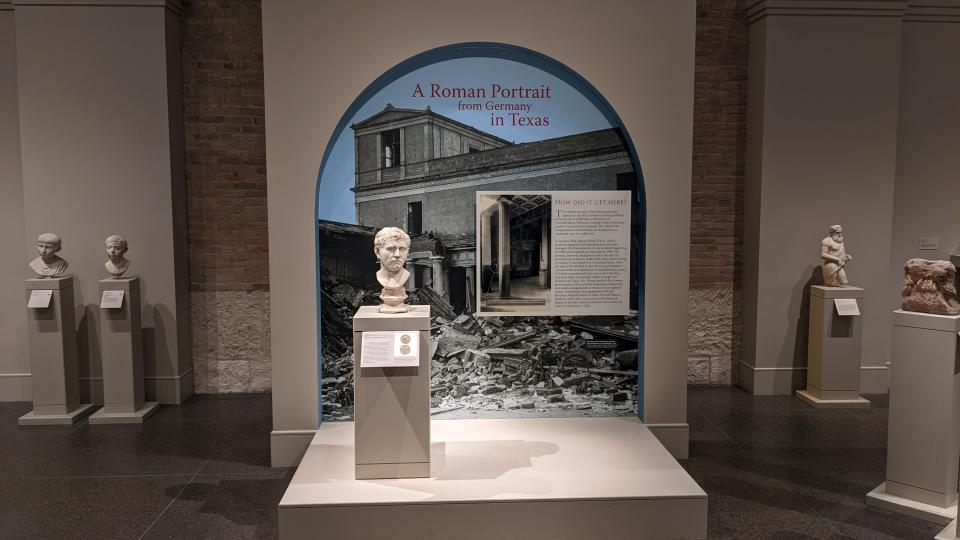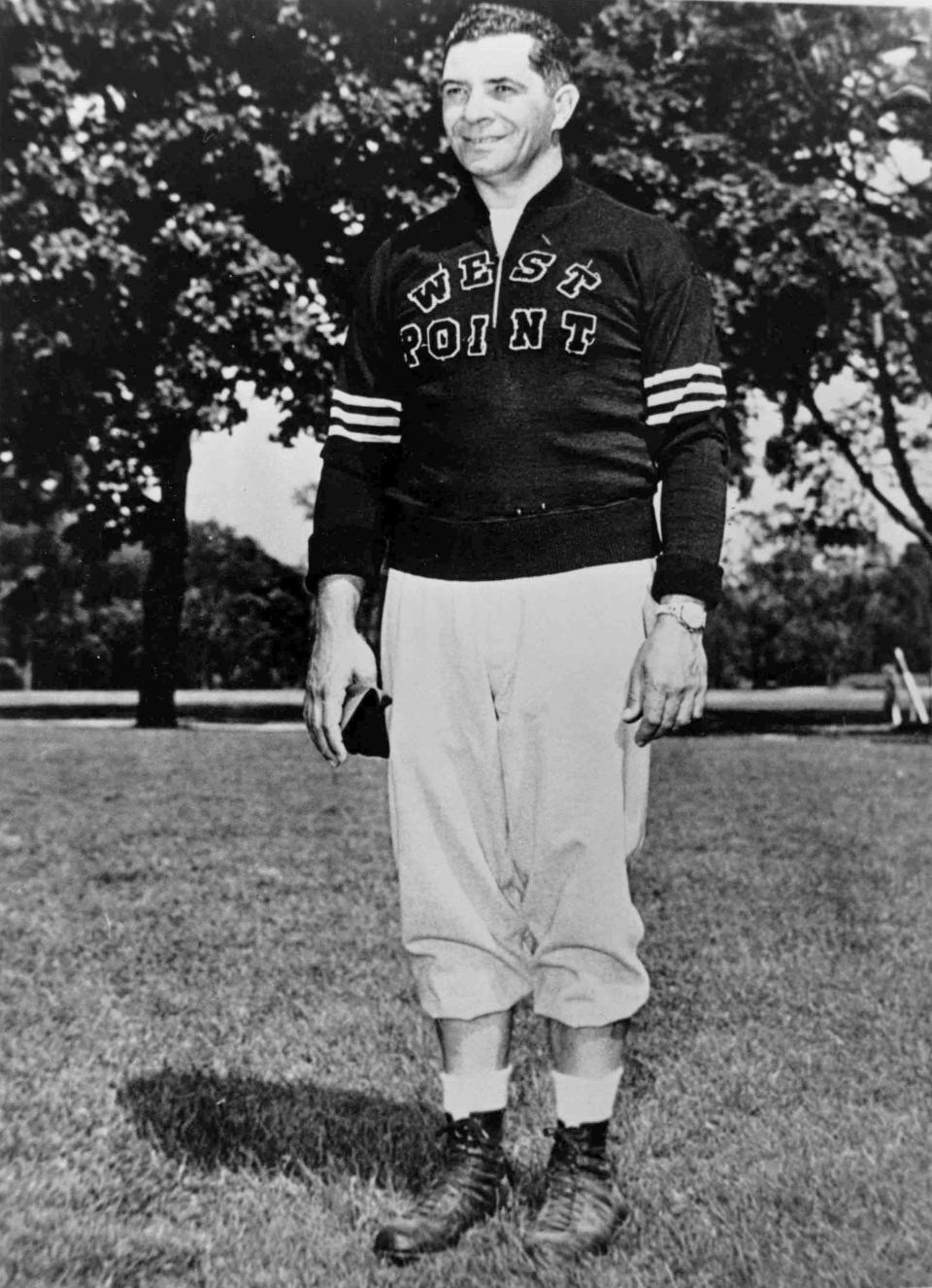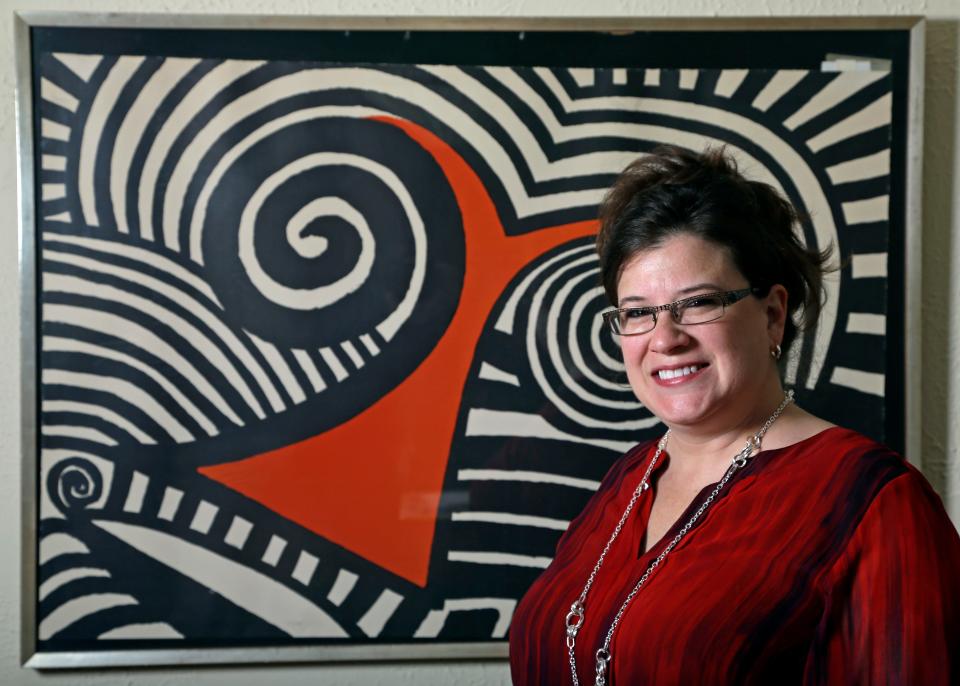From cheap to priceless: Roman bust isn't the only treasure that's been uncovered at Goodwill
It's a dream for any bargain hunter or vintage enthusiast to find a valuable treasure while on the prowl.
It makes every bit of the seemingly endless hours spent wincing at the screeches from metal racks under blaring fluorescent lights worthwhile. For a few lucky ones, being able to recognize one person's disposable belonging as an important item can pay off.
That's what happened for an art collector and Goodwill frequenter, Laura Young, who recently returned an Ancient Roman bust to its place of origin after purchasing the piece in 2018 from a Goodwill store in Austin, Texas, for $34.99.
While finding a Roman bust at an American Goodwill store is unheard of, there have been plenty of other eagle-eyed thrifters who've found their own treasures. From a cooler full of marijuana to a Founding Father's newspaper, here's a look at other amazing — and extremely valuable — finds.
Ancient Roman bust turns up in Texas
Experts at the San Antonio Museum of Art believe the sculpture, which Young found on a Goodwill store’s floor nestled beneath a table, was created around the late first century B.C. to early first century A.D., and belonged to King Ludwig I of Bavaria, who lived from 1786 to 1868.
The piece once was housed in a German museum decades ago, according to Sotheby's, the fine arts brokerage that identified the bust and connected Young with German authorities.
After standing for nearly 200 years, the bust was severely damaged by Allied bombers during World War II and was unaccounted for until Young’s discovery.
So, how did it end up in the United States?
A WWII soldier returning home likely brought it to Texas sometime before a U.S. Army base stopped operating U.S. Army bases in Aschaffenburg, Germany, at the beginning of the Cold War, said Emily Ballew Neff, the Kelso director at the San Antonio Museum of Art where the bust is on display.
Young’s lawyer, Leila Amineddoleh, told USA TODAY that her client received an undisclosed amount finder's fee for returning the bust but could not sell it because someone else was the rightful owner.
The bust will finally return to Germany, after being on display at the San Antonio Museum of Art until May 21, 2023, Amineddoleh said.

Donor leaves cooler full of marijuana
In 2017, Goodwill employees in Monroe, Washington, were sorting through donations when they discovered something slightly less practical than a used dish set.
A cooler was dropped off. Instead of rotten food employees may have expected to find, a donor left a much more generous gift: about four pounds, or 64 ounces, of marijuana. At the time, police estimated it was worth $24,000, Fox reported.
While recreational marijuana was legal in Washington at that point, more than one ounce of weed for personal use could bring a felony charge with up to five years of jail and a $10,000 fine.
This cooler was donated over the weekend to the Goodwill. Employees surprised when they opened the lid. Police were called... pic.twitter.com/50z1OinsER
— Monroe Police Department (@MonroePolice) March 14, 2017
Couple pays 58 cents for sweater once worn by legendary football coach
In 2014, a pair of vintage clothes hunters purchased a 58-cent West Point sweater with “Lombardi” scribbled on the tag at a North Carolina Goodwill.
Sean and Rikki McEvoy didn't think much of the name — until they watched a documentary showing legendary football coach Vince Lombardi wearing a similar sweater in a photo.
Lombardi won three NFL championships and two Super Bowls as head coach of the Green Bay Packers.
The McEvoys auctioned off the sweater in 2015 for $43,020.
GREEN BAY PACKERS LEGEND: Couple unwittingly buys a $20,000 Vince Lombardi sweater for 58 cents

A Founding Fathers' pre-Revolution newspaper
Just months shy of the Revolutionary War, the Pennsylvania Journal and the Weekly Advertiser was published on Dec. 28, 1774, filled with ads and articles encouraging a rebellion against the British.
There were only three known copies of the historic paper at the time, until 2018 when a Goodwill employee in Woodbury Heights, New Jersey, found a fourth copy, according to the American Philisophical Society, which acquired the document for an undisclosed amount in 2019, PBS reported.
The paper featured the iconic "Unite or Die" masthead (a version of Benjamin Franklin’s “Join, or Die” design), and four printed signatures by John Hancock, who was the president of the Provincial Congress.
In a statement, Patrick Spero, librarian of the American Philosophical Society, said the newspaper “captures a key part of the story of the Revolution and creation of a nation.”
Assistant Conservator for Archival Materials Anisha Gupta said the document had sustained “huge losses." It arrived stained by a red frame, probably sat in standing water for a lengthy period of time, and may have encountered a mouse at some point.

Iconic lithograph won this savvy shopper's heart
An abstract black-and-white lithograph with spirals and a large red nose caught the eye of Karen Mallet in 2012, who spotted the $12.99 artwork being sold at a Goodwill in Milwaukee.
She used her loyalty card to pay $12.34 for the artwork. It later was valued at $9,000.
“I've wasted more on worse things," she told the Lubbock Avalanche-Journal at the time.
Mallet discovered the piece was No. 55 of 75 lithographs made by Alexander Calder in 1969 and worth $9,000. Calder is widely known for his abstract sculptures in public spaces and died in 1976.
Mallet said she didn't even like "Red Nose" at first, but has since grown fond of the piece and has kept it.

This article originally appeared on USA TODAY: Goodwill ancient Roman bust: What other treasures have been found?
